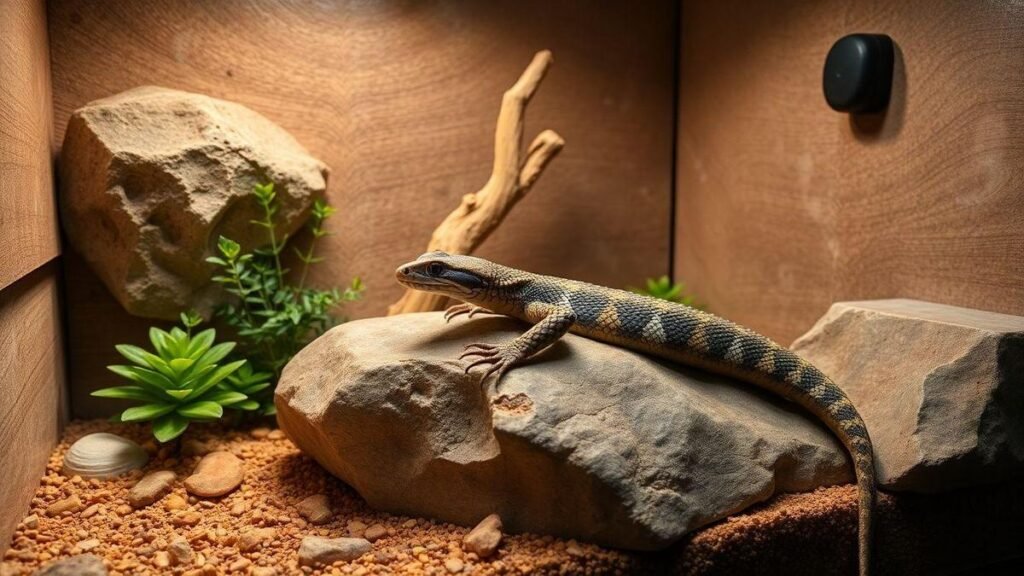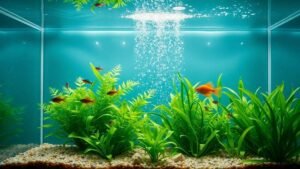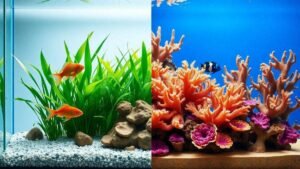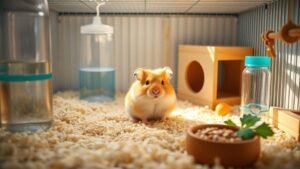Como montar um terrário para répteis em casa de forma correta — I write from hands-on experience to help you pick the right size and layout for each species, measure your reptile, plan escape-proof ventilation, and build a proper thermal gradient. I explain how I choose a safe substrate like coconut coir or orchid bark and avoid harmful woods. I cover temperature, UVB, daily checks, how I manage humidity, safe plants, and damp hides to reduce respiratory risk. I show how I add sturdy hides, secure décor, and keep a simple log for feeding, cleaning, and overall health so your reptile can thrive.
Key Takeaway — Como montar um terrário
- Provide a warm side and a cool side.
- Choose a safe substrate that fits species needs.
- Add hiding spots and climbing areas for security.
- Use proper lighting and UVB.
- Keep clean water and check temperature and humidity daily.
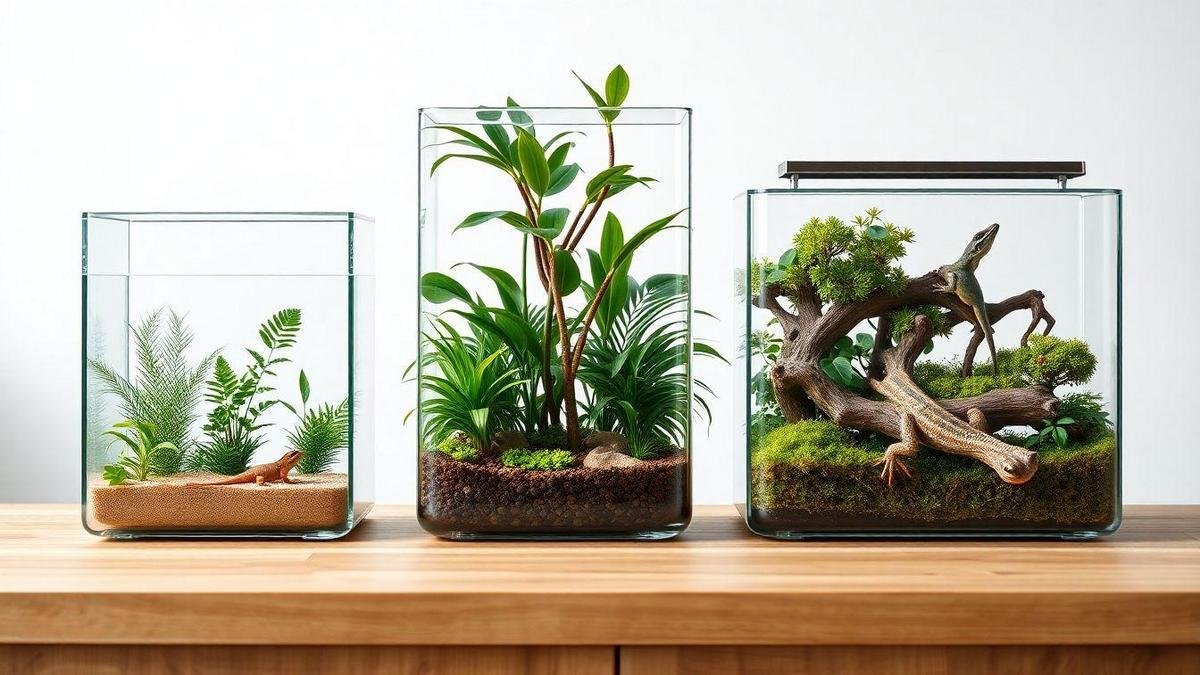
How I choose the right size and layout
I measure and research species needs when I think about Como montar um terrário para répteis em casa de forma correta
I start by measuring my reptile from nose to tail tip and noting length and weight. I review care sheets for activity level, climbing habit, and humidity needs. Arboreal species get taller enclosures; ground‑dwellers get more floor space. Small changes in space make big differences in behavior and stress.
If you follow Como montar um terrário para répteis em casa de forma correta, this step is core: it keeps your animal calm and healthy. For first steps on bringing a new animal home and creating routines that reduce stress, consider guidance on safely introducing a new pet to your home.
I plan escape‑proof ventilation and a thermal gradient
I design ventilation so air flows but the reptile cannot escape — fine mesh and secure lids with locks or clips. I set a thermal gradient with a warm side and a cool side, monitored by two thermometers and a thermostat to avoid spikes.
Quick steps:
- Use a lid with tight mesh and strong fasteners.
- Create a basking spot and a cool retreat.
- Check temperatures daily and log them.
Simple size checklist (typical)
| Category | Typical adult length | Minimum tank size (gallons) | Example species |
|---|---|---|---|
| Hatchling / Juvenile | under 12 in (30 cm) | 10–20 gal | baby geckos, small hatchling snakes |
| Small adult | ~12–24 in (30–60 cm) | 20–30 gal | adult leopard gecko, small corn snake |
| Medium adult | ~24–48 in (60–120 cm) | 40–55 gal | ball pythons, medium corn snakes |
| Large adult | over 48 in (120 cm) | 75 gal | bearded dragons, large pythons |
I add extra space for active animals and choose taller tanks for arboreal species.

How I pick substrate — matching species and safety
When I follow Como montar um terrário para répteis em casa de forma correta, my priority is health. I choose substrate based on cleanability, humidity control, impaction risk, and comfort.
I compare common options
| Substrate | Pros | Cons | Best for |
|---|---|---|---|
| Coconut coir | Holds humidity, natural feel | Can mold if too wet | Tropical species, burrowers |
| Orchid bark | Drains well, low dust | Not for deep burrowers, can be sharp | Moist hides, larger species |
| Paper towels | Cheap, clean, low impaction risk | Not natural, needs frequent change | Sick animals, hatchlings, quarantine |
| Reptile carpet | Reusable, safe for feet | Needs washing, can trap bacteria | Desert species, testing enclosures |
I use coconut coir for humid geckos, paper towels for monitoring health, and reptile carpet for desert lizards while testing diet/temperature.
Avoid cedar and loose wood shavings; set safe depth for hatchlings
Never use cedar — its oils are toxic. Avoid loose wood shavings for small reptiles (impaction risk). For hatchlings, keep substrate very shallow (about 5–10 mm / 0.2–0.4 in) or use paper towels until feeding is established.
Substrate safety habits:
- Check daily: remove feces and wet spots.
- Control humidity: high enough for species but low enough to prevent mold.
- Rotate/replace: change loose substrate every few weeks; clean liners weekly.
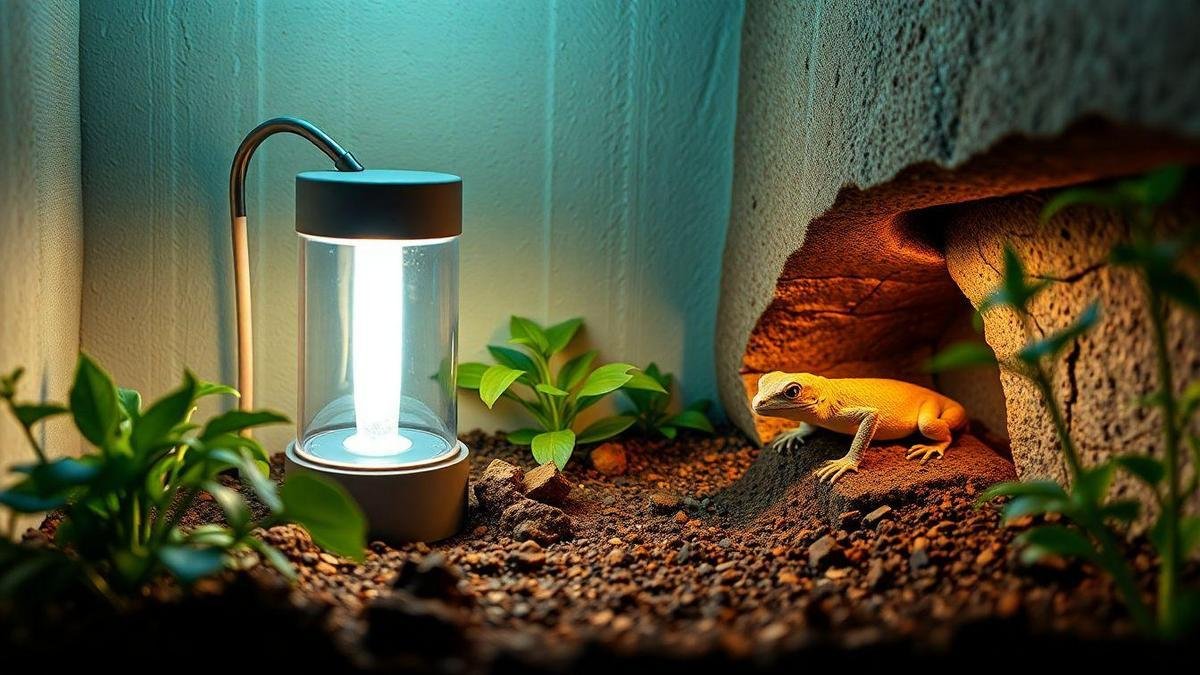
Temperature and lighting
Create a proper temperature gradient
Set a basking spot on one side and a cool side on the other. Watch behavior: if the animal basks too long, adjust; if it never basks, raise the basking temp slightly.
Typical ranges (match to species):
| Zone | Typical temp (°F) | Typical temp (°C) | What I look for |
|---|---|---|---|
| Basking spot | 90–105°F | 32–40°C | Active sunning, stretched posture |
| Cool side | 70–85°F | 21–29°C | Resting, digestion, calm behavior |
Use ceramic or basking bulbs placed safely above rocks/branches; keep direct contact impossible.
Add UVB when needed and set photoperiod
Use UVB for species that require it (many diurnal lizards). Position bulbs at recommended distance and replace per manufacturer lifespan. Run lights to mirror natural daylight (typically 10–14 hours daytime, 10–14 hours dark). Use heat-only at night if needed.
I check temps and UVB daily with:
- Digital probe thermometer for spot checks.
- Infrared thermometer for surfaces.
- UV meter to confirm UVB output.

Humidity and plants
Monitor humidity and use damp hides
I check humidity twice daily with a reliable hygrometer, placing probes near warm and cool ends. Typical targets:
- Tropical reptiles: 60–80%
- Drier species: 30–50%
Tools I use:
- Manual misting for quick boosts.
- Small fogger for steady moisture (use timers).
- Damp hide for localized humidity (shedding, stress relief).
Choose safe plants and avoid toxins
I use plants that hold moisture and provide cover: bromeliads and sphagnum moss are favorites. For guidance on selecting non‑toxic, hardy houseplants that tolerate indoor conditions, I reference tips for choosing safe plants for homes and ideas from an indoor garden setup like a DIY indoor garden. Avoid toxic houseplants such as philodendron, dieffenbachia, and oleander. Quarantine and rinse new plants before adding them.
I balance humidity cycles and plant placement to reduce respiratory risk: a humid side and a dry side, ventilation (screen tops, vents), and a daily dry period keep lungs clear and bedding mold-free.
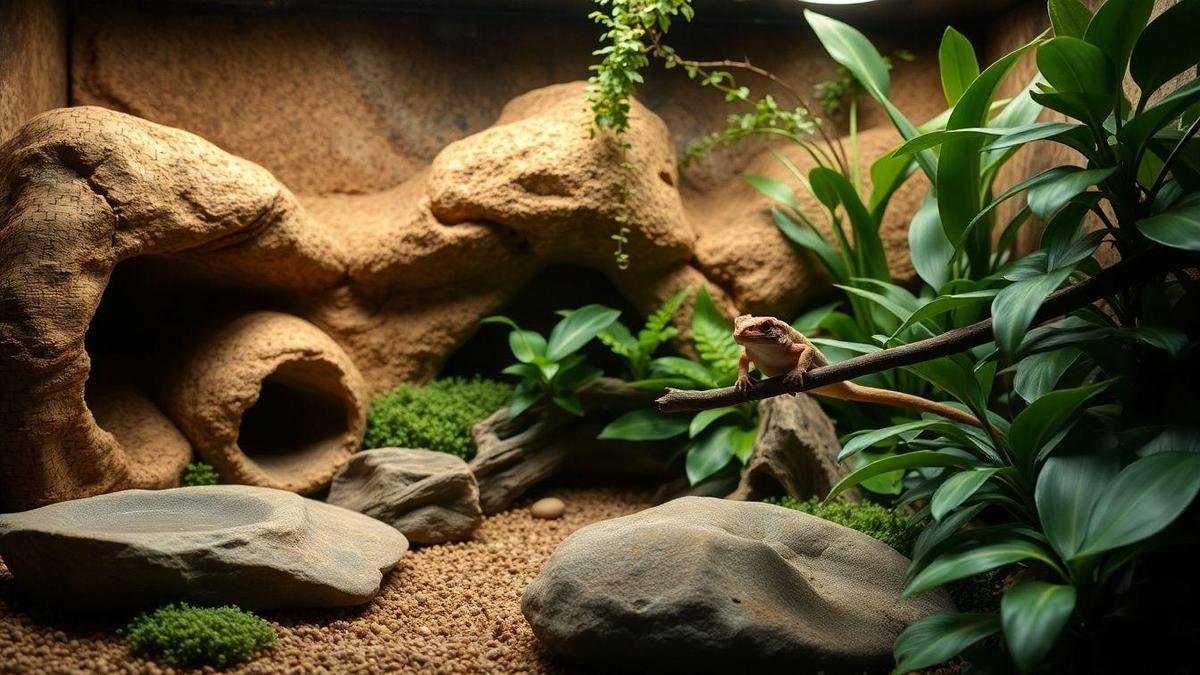
Décor, hides and safety
I aim for simplicity and safety. These steps reflect my approach to Como montar um terrário para répteis em casa de forma correta.
At least two hides and secure climbing areas
Provide at least two hides: a warm hide near the heat source and a cool hide on the opposite side. Anchor climbing branches so they cannot wobble or fall.
| Hide type | Purpose | Placement tip |
|---|---|---|
| Warm hide | Raise body temp for digestion | Near heat source, easy entry |
| Cool hide | Rest and cool down | Far side of tank, shaded |
| Climbing branch | Exercise and enrichment | Anchored to two points, no wobble |
For enrichment ideas and ways to keep animals mentally engaged, I use strategies from simple indoor enrichment tips.
Use non‑treated materials and test decor
Use non-treated wood, cork bark, stone, or ceramic. Avoid treated lumber, paints, or glues that off‑gas. Use aquarium‑safe silicone or stainless screws when attaching items. Test each item for stability and cleanability before placing it in the terrarium: a push test, simulated weight, wash test, and disinfect test (bleach 1:10, rinse, dry).
To make the indoor area comfortable and safe for your pet in general, follow principles for creating a pet-friendly indoor space.
Maintenance, feeding, and health tracking
Cleaning routine
Daily quick check: remove feces, shed skin, and uneaten food. Replace water daily.
Routine:
- Daily spot clean (waste, water dish).
- Weekly substrate check for damp spots, mites, odors.
- Monthly deep clean: remove animal, clean decor, replace substrate, use reptile‑safe disinfectant.
When cleaning, follow safety steps similar to pet-safe cleaning guidance to minimize risk to the animal and household, for example keeping pets safe during cleaning.
Feeding and supplements
Follow species‑specific feeding schedules. Gut‑load feeder insects 24–48 hours and dust with calcium and vitamins as recommended.
Simple guide:
| Type | Typical diet | Supplement routine |
|---|---|---|
| Insectivore (e.g., gecko) | Crickets, roaches | Gut-load 24–48h; calcium daily for juveniles; vitamins weekly |
| Omnivore (e.g., bearded dragon) | Vegetables insects | Veggies daily; insects 3–5x/week; supplement as needed |
| Carnivore (e.g., corn snake) | Rodents | Prey sized to girth; supplements rarely needed if whole prey used |
For general care principles that apply across species, I refer to broad care resources like the guide to caring for pets.
Keep a simple log
I record short entries for cleaning, temps, humidity, and feeding. Notes like active, refused food, or soft stool help spot trends and assist vets.
Example log row:
Date | Task | Hot temp | Cool temp | Humidity | Food | Notes
- –|—|—:|—:|—:|—|—
2025-08-01 | Spot clean | 32°C / 90°F | 24°C / 75°F | 40% | 10 crickets | Active, good appetite
I keep the search phrase I used when I started — Como montar um terrário para répteis em casa de forma correta — as a reminder of core steps and priorities. Periodically reviewing whether you’re meeting basic care standards is useful; a self‑check like assessing pet care helps catch gaps.
Quick step‑by‑step: Como montar um terrário para répteis em casa de forma correta
- Measure your reptile and research species needs.
- Choose tank size and ventilation; build an escape‑proof lid.
- Set a thermal gradient with a thermostatted heat source.
- Pick a safe substrate matched to the species.
- Add two hides, secure decor, and a water dish.
- Install UVB if needed and set a natural photoperiod.
- Monitor temps, UVB, and humidity daily and log data.
- Feed appropriately, gut‑load feeders, dust supplements, and clean regularly.
Conclusion
Setting up a terrarium boils down to a few essentials: pick the right size and layout, build a steady thermal gradient, choose a safe substrate, and add secure hides and decor. Small details — a locked lid, calibrated thermometers, a properly placed UVB lamp — keep your pet safe day after day. Use predictable routines: daily spot checks, weekly substrate reviews, monthly deep cleans, and a short log. Focus on health first, observe, and adjust. I learned by doing and mistakes — you will too. For more step‑by‑step help on Como montar um terrário para répteis em casa de forma correta, visit https://blogcraelo.com.
Frequently asked questions
Q: What tank size should I pick for a healthy reptile?
A: Choose a tank that allows movement. Small lizards often do fine in 20 gallons, medium species 40–75 gal, and large species 100 gal. Always check species‑specific recommendations.
Q: How do I set up heat and UVB safely?
A: Provide a warm basking spot and a cool side, use a thermostat, and monitor with two thermometers. Use UVB only for species that need it and position bulbs at the recommended distance.
Q: Which substrate is safe and clean for my pet?
A: Use paper towels, reptile carpet, coconut fiber, or orchid bark depending on the species. Avoid cedar and loose wood shavings for small reptiles; avoid loose sand unless species‑specific.
Q: How often should I clean and maintain the terrarium?
A: Spot clean daily, check substrate weekly, deep clean monthly (or sooner if you find odor or pests). Replace bedding more often if it smells or is contaminated.
Q: How do I start step‑by‑step: Como montar um terrário para répteis em casa de forma correta?
A: Start with tank size, secure ventilation, heat source and UVB (if needed), two hides, safe substrate, and a water dish. Set humidity and test temps, then observe and adjust. If you’re bringing home a new reptile, review tips on helping pets adjust to a new indoor environment and building trust with a newly adopted pet. Ask a vet if you’re unsure.
If you want more practical tips and detailed guides on Como montar um terrário para répteis em casa de forma correta, read more at https://blogcraelo.com.

